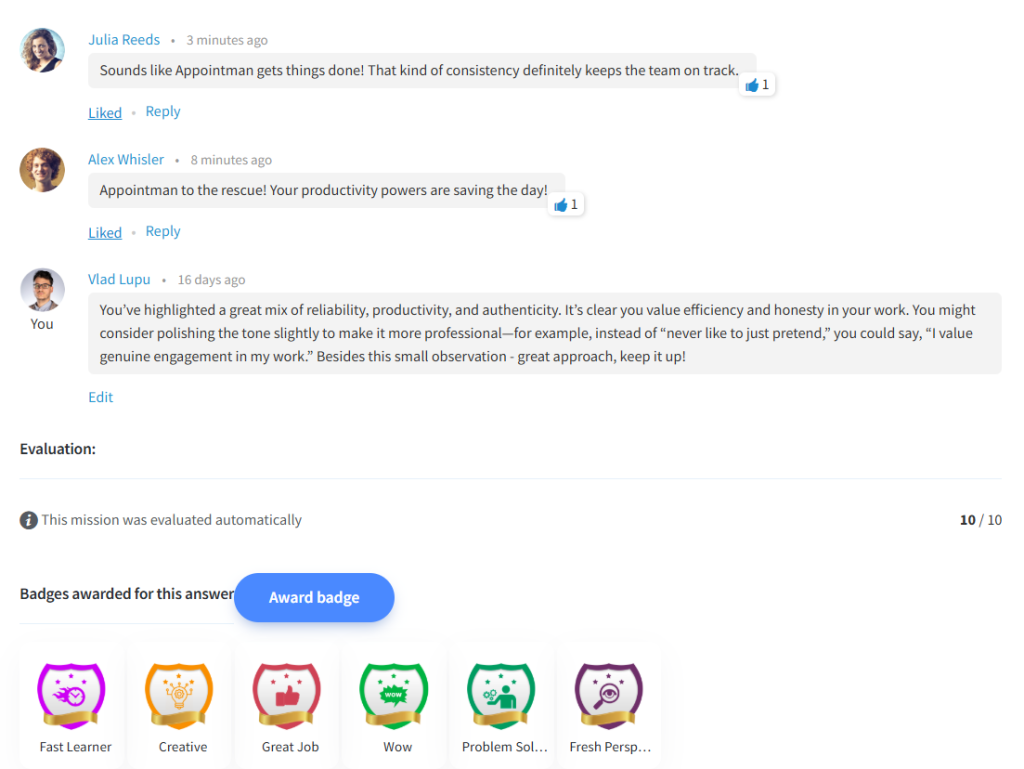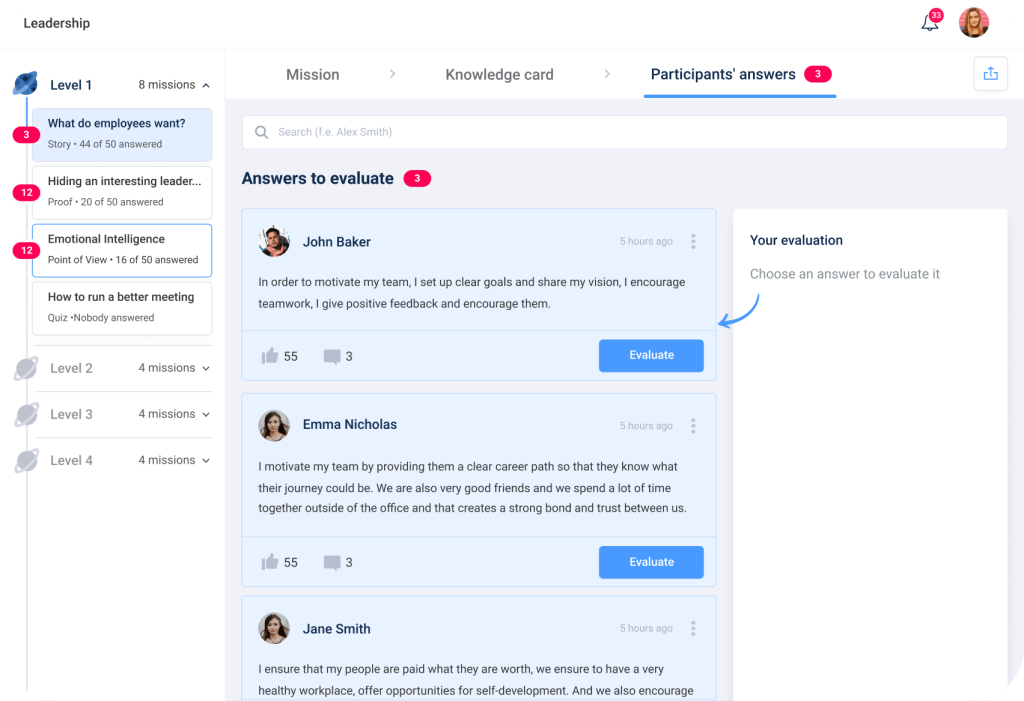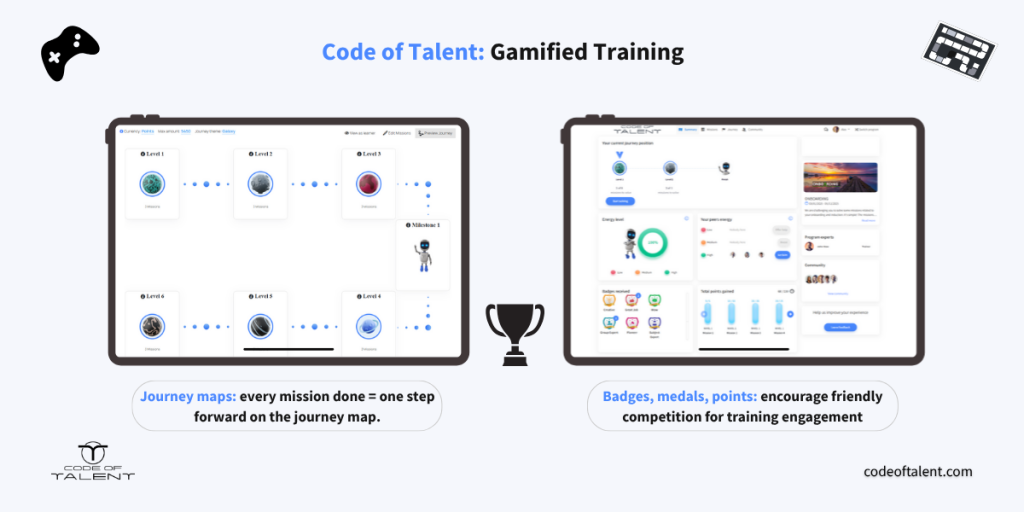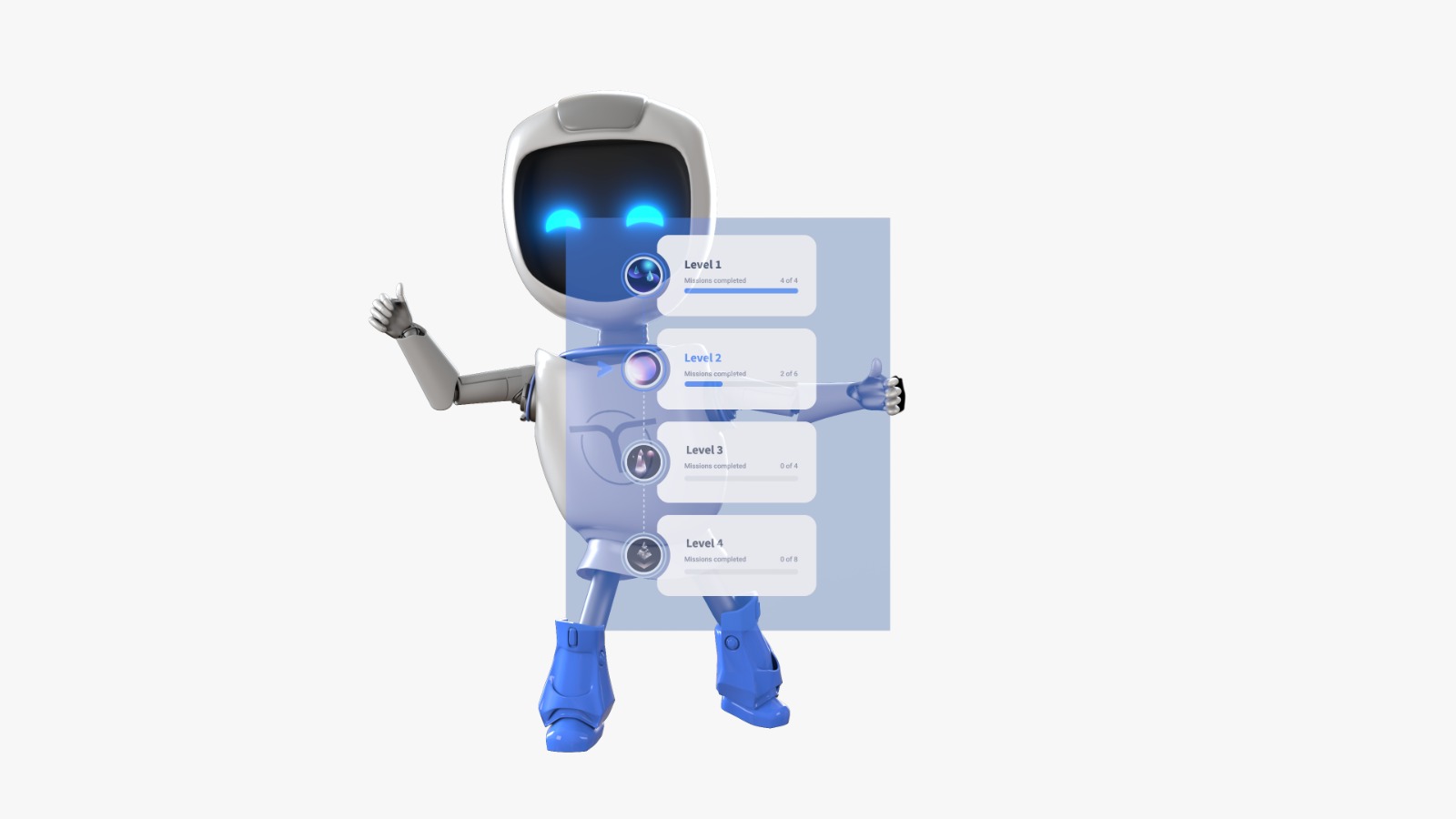We recently ran a series of articles on communication, exploring training, body language, and nonverbal cues. But there’s one part that hasn’t gotten enough spotlight: the importance of feedback in communication.
Feedback isn’t just about correction, but also about connection, growth, learning, and motivation. In the workplace for example, according to a Gallup report, 80% of employees who received meaningful feedback in the past week were fully engaged. This is a clear sign that feedback plays a vital role in engagement and productivity.

In this article, we’ll explore why feedback matters, how to deliver it effectively, and how this critical communication skill can be developed through corporate training programs.
Why the Importance of Feedback in Communication Cannot Be Overstated
Feedback acts as a bridge between intention and impact in communication. Without it, misunderstandings grow, motivation fades, and performance suffers. But with it:
- Messages can be clarified
- Behaviours can be adjusted, and
- Relationships can be strengthened.
In workplaces, it is more than just a tool for correction. Feedback is a vehicle for continuous learning and trust-building. When feedback is clear and consistent, teams work better together, support each other, and navigate challenges with open communication.
Feedback improves not only individual performance but also team dynamics and organizational culture.
Effective Feedback Techniques and Tools
Feedback plays a key role in how people learn, improve, and work together. The following techniques and tools show that the importance of feedback in communication depends not only on what is said, but also on how, when, why, and to whom it’s delivered.
Core Feedback Techniques
The Center for Creative Leadership’s 2019 guide, Feedback That Works, offers practical insights on how to deliver feedback that makes a difference. Applying these techniques can transform feedback from a dreaded chore into a valuable communication tool.
- Situation-Behavior-Impact (SBI) Model: Feedback should focus on specific situations, concrete behaviors, and their impacts. By describing what happened without judgment and explaining the results, feedback stays clear and objective. This prevents misunderstandings and keeps the conversation constructive.
- Feedforward: Instead of dwelling on past errors, feedforward concentrates on future improvements. This approach encourages positive change and a growth mindset by focusing on actionable next steps.
- Timeliness and Frequency: Giving feedback soon after the event keeps it relevant and easier to act on. Regular feedback, rather than waiting for annual reviews, builds trust and supports ongoing development.
- Two-Way Dialogue: Feedback should not be a one-sided lecture. Encouraging a conversation where the receiver can respond and share their view makes feedback more collaborative and effective.
Collaborative Feedback in Learning Environments
Collaborative learning thrives on shared responsibility. One of its strongest features is peer-to-peer feedback, which encourages individuals to reflect not just on their own progress but on others’ development too. This builds empathy, accountability, and active engagement. Instead of a top-down approach, learners become co-creators of the feedback process.
Key benefits include:
- Increased ownership of one’s learning journey.
- Diverse perspectives, which help identify blind spots.
- A safe space for trial and error, with supportive input from peers.
Micro-Feedback
Micro-feedback refers to quick, in-the-moment observations rather than lengthy evaluations. This is especially effective in digital learning or remote work environments, where attention spans are shorter.
Example tools or methods:
- Emoji reactions or quick polls during training.
- Short comments after completing a task or module.
- Instant feedback forms after meetings or presentations.
Real-Time Feedback with Digital Tools
With modern tools and dashboards, feedback doesn’t have to wait. Many platforms integrate real-time feedback based on performance data. This could be:
- Progress indicators.
- Completion milestones.
- Automated notifications for strengths or areas of improvement.
These digital tools function as a form of instant communication which reinforces good behaviors and corrects issues before they escalate.
360-Degree Feedback
This technique gathers feedback from multiple sources: peers, managers, direct reports, and even clients. It provides a more complete view of performance and communication style.
Especially useful in:
- Leadership development.
- Team-based projects.
- Onboarding and training programs.
360-degree feedback is a cornerstone of collaborative and transparent work cultures, where everyone has a voice in growth.
Mentor and Peer Reflection Sessions
Instead of one-off feedback moments, some organizations implement scheduled reflection sessions. These can be informal check-ins or structured debriefs where feedback is shared regularly.
They promote:
- Deeper connection between team members.
- Space to discuss challenges and celebrate wins.
- Continuous alignment on goals and expectations.
Behavioral Modeling and Feedback Loops
Sometimes feedback is most powerful when tied directly to observed behavior and then modeled by someone else. In collaborative learning setups, a mentor or peer might demonstrate a skill or interaction, followed by feedback from the group. This is also a form of on-the-job training.
This builds:
- Real-world context for feedback.
- A culture of learning through doing, not just telling.
How to Embrace the Importance of Feedback in Communication
The modern workplace demands innovative ways to make feedback more effective and engaging. Code of Talent approaches feedback through a unique blend of collaborative learning, multi-source input, and technology-driven insights.
Together, these features highlight how embracing the importance of feedback in communication can lead to better learning outcomes, stronger engagement, and more effective development programs.
Collaborative Learning

Learners give each other feedback throughout their training progress. This peer-to-peer interaction encourages a shared sense of responsibility and learning.
Multi-Source Feedback
Beyond peer feedback, mentors, training facilitators, and managers also provide input. With this layered approach, feedback is well-rounded and comprehensive.

Analytical Dashboard
Mentors and managers benefit from detailed analytics that give better insights into learner progress. This helps tailor feedback to be more specific and impactful.

Gamification
Using game elements such as points and rewards, Code of Talent makes feedback more engaging and motivating. Gamification acts as a form of immediate, positive feedback that drives continued participation.

Conclusion: The Central Role of Feedback in Communication
Feedback is a powerful tool that helps individuals and organizations grow, adapt, and succeed. By adopting clear techniques such as the SBI model, encouraging feedforward, maintaining timely conversations, and fostering two-way dialogue, communication becomes a living process rather than a static exchange.
Innovative platforms like Code of Talent demonstrate how feedback can be integrated into daily learning and work life in ways that motivate and engage. For those seeking to improve communication and development practices, exploring tools that emphasize collaborative and multi-source feedback is a great next step.
To understand the importance of feedback in communication, try Code of Talent’s free trial. Build your own training program in minutes and explore the platform’s features, including its feedback tools.
Cover photo: Freepik





